Top Web Development Tools and Trends to Know in 2025
In 2025, web development continues to evolve at lightning speed, driven by community feedback, real-world testing, and powerful innovation. With thousands of options available, it’s important to focus on the top web development tools that developers actually love using.

This blog brings you a curated list of the most trusted and widely used web development tools, based on global developer surveys, real user reviews, and community trends.
Let’s dive into the tools and stacks making a real impact in 2025:
Most Popular Programming Languages
According to Stack Overflow’s 2024 Developer Survey and BrowserStack trends, here are the top languages developers rely on:
- JavaScript – Still the king of web development with ~62% usage worldwide. It’s essential for interactive, dynamic websites.
- HTML/CSS – The foundational duo for structure and styling.
- Python – With a clean syntax and powerful libraries, Python powers back ends, AI models, and automation.
These languages remain the go-to choice for developers working on both personal and enterprise-level projects.
Front-End Frameworks Developers Love
1. React
- Most-used front-end library in the world.
- Offers a component-based structure and fast rendering via a virtual DOM.
- Backed by Meta and praised for flexibility and reusability.
2. Vue.js
- Loved for its simplicity and low learning curve.
- Highly favored by small teams and startups building SPAs (Single Page Applications).
3. Angular
- A complete front-end framework maintained by Google.
- Ideal for large, structured applications with complex data handling.
Community Insight: Developers on Reddit often mention that combining React or Vue with Tailwind CSS and Supabase gives them an incredibly fast development cycle with high flexibility.
Trusted Back-End Technologies
1. Node.js
- Power scalable and real-time apps like chat services and APIs.
- Enables full-stack JavaScript development, making it a favorite in modern tech stacks.
2. Python (Django & Flask)
- Django: Great for rapid development with built-in features.
- Flask: Lightweight and flexible for custom applications
3. Java
- Still a preferred choice in enterprise-grade apps for its reliability and security.
4. Ruby on Rails
- It’s easy to use and helps startups build and launch websites quickly.
Top Developer Tools (By Usage & Satisfaction)
Visual Studio Code (VS Code)
- Used by over 73% of developers worldwide.
- Lightweight, fast, and packed with useful extensions.
GitHub
- A reliable platform for managing code, working with teams, and contributing to open-source projects.
Docker
- Powers consistent deployments across environments through containerization.
- Used by 59% of professionals.
Webpack
- A reliable module bundler for front-end assets.
- Works well with frameworks like React and Vue.
Postman
- A go-to for testing and documenting RESTful APIs.
CI/CD Tools: CircleCI, Jenkins, GitLab CI
- Automate your testing, integration, and deployment processes.
- Highly praised for reducing errors and saving time.
AI-Powered Tools Gaining Developer Trust
GitHub Copilot
- An AI assistant that suggests real-time code completions and entire functions.
- Developers say it speeds up coding without reducing quality.
DeepSeek R1 / Cursor / Replit
- Tools like Cursor allow developers to chat with their codebase for faster debugging.
- Replit brings AI to your in-browser development environment.
Uizard / Wix ADI
- These tools help create website designs or layouts just by using simple text prompts.
What Developers Say:
“GitHub Copilot saves me hours every week. It’s like pair programming with an AI teammate.” – Developer on Stack Overflow
Testing & Quality Tools
Playwright (by Microsoft)
- Used for end-to-end browser testing.
- Highly rated for automation and cross-browser support.
Snyk & Checkmarx
- Help scan code and open-source dependencies for vulnerabilities.
- Essential for integrating security into DevSecOps workflows.
UI/UX & Design Tools
Figma
- Loved for real-time collaboration, prototyping, and design handoffs.
- Most preferred design tool among front-end teams.
Tailwind CSS
- Utility-first CSS framework developers love for fast UI development.
- Used frequently with React, Vue, and Next.js.
Trending Web Stacks in 2025 (As per Community Use)
Developers on Reddit and GitHub are increasingly using:
Next.js + Supabase + Tailwind CSS
- Next.js: Full-stack React framework with hybrid rendering support.
- Supabase: An open-source tool that gives you a ready-to-use backend with login and database features.
- Tailwind: Fast and customizable styling with no CSS bloat.
“We’re using this stack for all MVPs and client projects. It’s fast, scalable, and requires minimal boilerplate.” — Reddit user.
Summary Table
| Languages | JavaScript, Python, HTML/CSS |
| Front-End | React, Vue.js, Angular |
| Back-End | Node.js, Python (Django/Flask), Java, Ruby |
| IDE | Visual Studio Code |
| Version Control | GitHub |
| Containerization | Docker |
| CI/CD | Jenkins, GitLab CI, CircleCI |
| API Testing | Postman |
| AI Tools | GitHub Copilot, Cursor, DeepSeek, Uizard |
| Security Tools | Snyk, Checkmarx |
| Testing | Playwright |
| UI/UX Tools | Figma, Tailwind CSS |
| Trending Stack | Next.js + Supabase + Tailwind |
Final Thoughts
Web development in 2025 is smarter, faster, and increasingly AI-assisted. Developers today prefer the top Web Development tools that save time, reduce bugs, and offer seamless integration with modern stacks.
“Great tools don’t just help you build; they help you build better.”
Want to learn these tools hands-on and build real-world projects?
👉 Join Aryu Academy’s Web Development Programs
Get trained by industry professionals and work on live applications using the most trusted and trending tech stack of 2025.

Subscribe to Our Newsletter!
Get The Latest News, Updates, And Amazing Offers
Popular Posts

Oct 13, 2025
How to Make a WordPress Site: A Step-by-Step Guide

Oct 3, 2025
JavaScript vs TypeScript: Which is better for developers?

Sep 23, 2025
Data Analytics Using Python: A Complete Beginner’s Guide
Popular Tags











